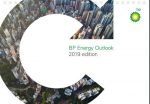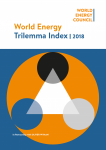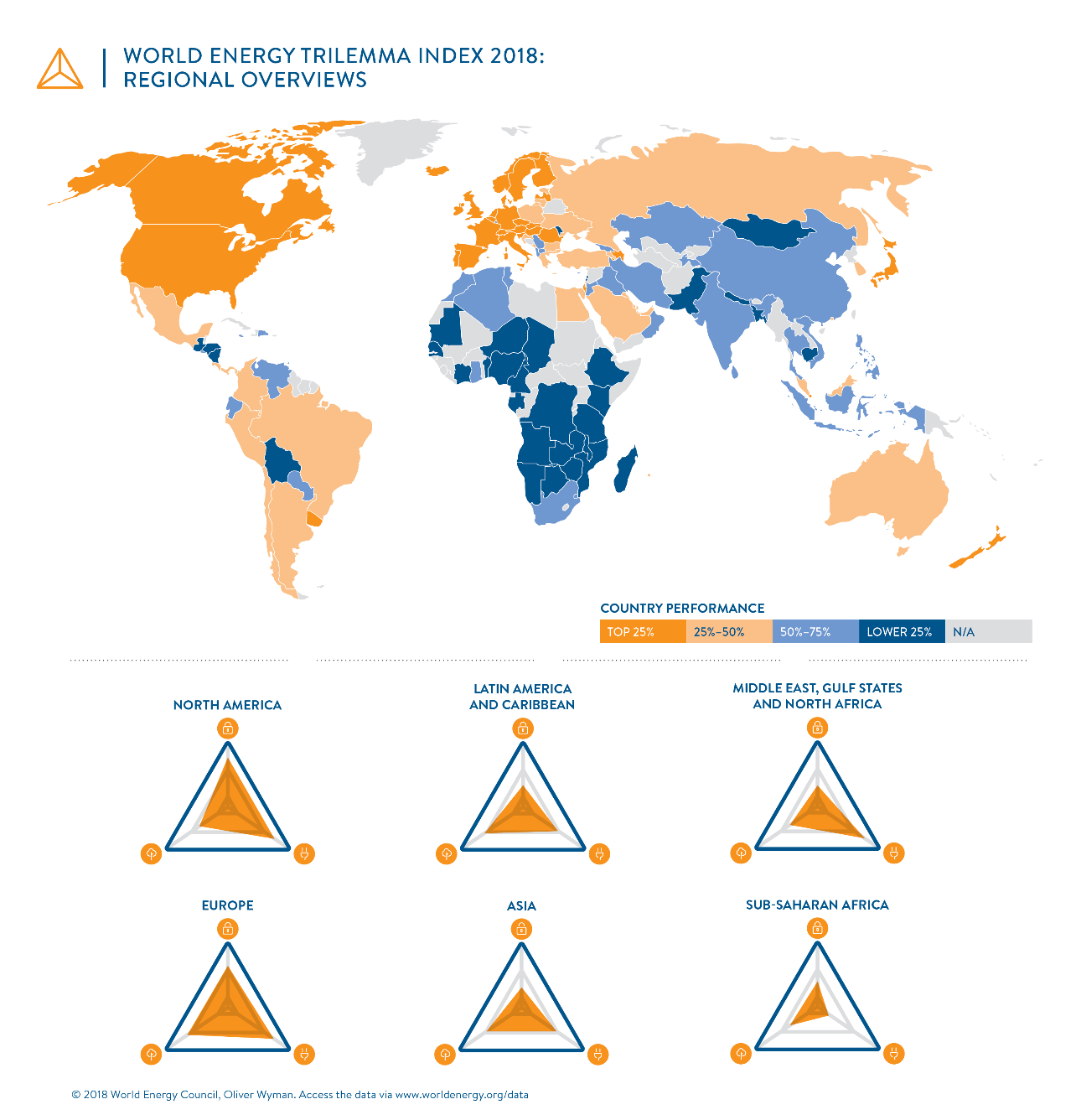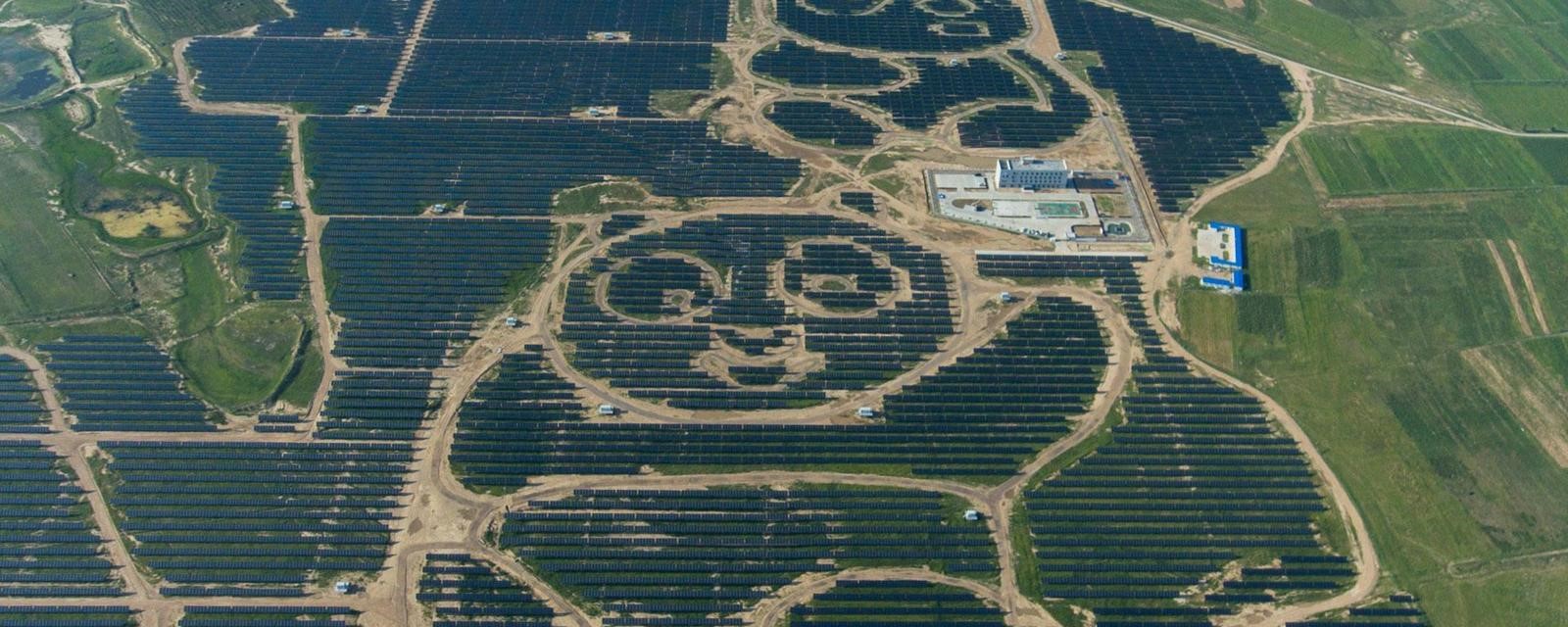Preparing for a cleaner, greener future
How will the world’s energy mix change over the next 30 years, and which new technologies look set to have the biggest impact on meeting a growing energy demand?
As the global population continues to expand and increasing urbanization drives dramatic changes to the way we live and work, how will the energy sector adapt to the new pressures it faces?
 In the ‘evolving transition’ scenario outlined in the BP Energy Outlook 2019[1], global energy demand increases 33% by 2040. But there are also fundamental shifts in the energy mix to meet that demand, with renewables contributing half of the primary energy growth and coal’s share of power generation falling from 40% in 2017 to just 20% by 2040.
In the ‘evolving transition’ scenario outlined in the BP Energy Outlook 2019[1], global energy demand increases 33% by 2040. But there are also fundamental shifts in the energy mix to meet that demand, with renewables contributing half of the primary energy growth and coal’s share of power generation falling from 40% in 2017 to just 20% by 2040.
Indications of this transition to lower carbon fuels have been long visible and the rise of renewables is now beyond doubt. In 2019 alone, the solar photovoltaic (PV) market, for example, is set to experience dramatic growth. By the end of December, it is expected to be up 25% year-on-year – with a 43% increase outside China[2]. If these expectations are fulfilled, 129 GW of solar installations around the world will be helping to forge a cleaner energy future[3] for all.
 The World Energy Council’s published their Trilemma Index which ranks countries’ energy performance on three dimensions, Energy Security, Energy Equity, and Environmental Sustainability, and is derived from modelling global and national data.
The World Energy Council’s published their Trilemma Index which ranks countries’ energy performance on three dimensions, Energy Security, Energy Equity, and Environmental Sustainability, and is derived from modelling global and national data.
The latest results suggest where a coherence and cohesive integrated policy approach can help deliver well-calibrated energy systems in this global transformation.
Managing and maintaining this balance between security, equity and sustainability with a rapid conversion to decentralized, decarbonized, and digital systems is daunting: and not without risks. In 2018 the Report shows that although many countries are managing this delicate balance well, just eight nations a given a top AAA balance rating and with their long history of respect for the environment, it comes as no surprise that once more Denmark, Switzerland and Sweden are at the top.

Over the course of 2019, China, the United States (where Washington state has recently followed California, Hawaii, Nevada and New Mexico to become the fifth state to establish a 100% clean energy target[4]), and India will maintain their status as the top three PV markets.

However, almost two-thirds of the PV installations forecast for 2019 will be in Asia Pacific (64%)[5], where Japan in particular is one of many countries making considerable changes. It aims to achieve an 80% cut in greenhouse gases by 2050, and have 7% of its 2030 power supplied by solar[6]. In Africa and the Middle East, progress is less dramatic, accounting for just 5% of this year’s solar installations, despite enjoying climate conditions that are well suited to PV plants.

That is not to suggest that a burgeoning renewables sector is not taking hold across large swathes of the Middle East, however. In April 2020, The Solar Show MENA 2020 and The Wind Show MENA 2020 events will bring together hundreds of speakers and sponsors alongside thousands of attendees[7]. The events build on the momentum already present from a series of world-class developments in the region, including the record-breaking Mohammed Bin Rashid Al Maktoum Solar Park in the United Arab Emirates. When finished, the US$ 13.6 billion plant could power 1.3 million homes and cut CO2 emissions by 6.5 million tons per year[8].
Video courtesy of Masdar, part of Mubadala Investment Company
Developments are also moving at pace in Saudi Arabia, with more than 6 GW of wind energy capacity set to be installed over the next decade, contributing almost half (46%) of all wind projects in the Middle East through to 2028[9]. At the same time, the Saudi Arabian government aims to have 40 GW of solar energy installed by 2030[10] as it moves to an increased level of economic and energy diversification in line with its Saudi Vision 2030, ambitions.
Yet while the widespread adoption of renewable energy is to be encouraged, there is still much more progress to make. The International Renewable Energy Agency (IRENA) estimates that carbon dioxide emissions need to fall 70% by 2050 to meet existing climate goals[11]. Renewables will play a major role in delivering those reductions, accounting for anywhere from 60% to 90% of the necessary fall in CO2 emissions while meeting up to 86% of electricity demand over the same timescale[12]. Its analysis also reveals that “health, subsidy and climate-related savings would be worth as much as US$ 160 trillion cumulatively over a 30-year period”.[13]
Developing the necessary infrastructure to ensure renewables become the majority source for electricity will be a sizeable challenge over the next two decades. Through Fotowatio Renewable Ventures (FRV), Abdul Latif Jameel Energy is already playing a crucial role in this exciting sector. FRV is increasing its investments significantly in 2019, with its reach stretching from Australia in the east through to Mexico and Chile in the west. By 2024, it aims to have increased its installed capacity eight-fold. And as it continues to develop its energy assets, it remains committed to delivering world-class standards and expertise in every market in which it operates.

In Australia, FRV is actively involved with six solar projects, having invested substantially in the country’s accelerating transition to renewables since 2012. In November 2018, it signed a power purchase agreement with Snowy Hydro for the production of 67.8 MW of the Goonumbla Solar Farm project in New South Wales. When operations begin in June 2020, the plant will supply enough energy for more than 45,000 households.
More recently, FRV’s 100 MW Lilyvale plant – the company’s second large-scale solar installation in Queensland – began production in March 2019. Fady Jameel, Deputy President and Vice Chairman of Abdul Latif Jameel, said: “We are proud to be contributing to Australia’s drive for clean energy.”
In Spain, where FRV initiated its first moves in the renewables sector 12 years ago, it has reached financial close for the 50 MW La Solanilla Solar Farm in Trujillo, the latest in a string of projects across Extremadura, Andalusia, Almeria and Valladolid.
Elsewhere, FRV’s solar expertise is also being harnessed in India, where the Andhra Pradesh plant will power 35,000 homes, and at the soon-to-be-operational 342 MW Potosí Solar Plant in San Luis de Potosí, Mexico, which will supply more than 76,000 homes with clean energy. In a further indication of the breadth of its ambitions, its current activities also reach into Armenia, Chile, Jordan, Uruguay and Brazil.
However, it is not just the rise of renewables that is changing the energy sector. Energy storage technology, too, is transforming the potential of renewable energy sources to supply consistent, reliable energy even when the sun isn’t shining, or the wind isn’t blowing.
According to research consultancy, IHS Markit, the global energy storage project pipeline already exceeds 63 GW (including battery, mechanical and thermal storage)[14], while a KPMG report states that the widespread and rapid implementation of solar photovoltaic (PV) and wind energy plants is “catalyzing efforts to modernize electricity systems around the world”[15]. And a key part of this modernization program is the development, introduction and growth of battery storage systems.
One pioneering FRV development in Chile typifies the step-change that battery storage is predicted to make to consistent, ‘always-on’ renewable energy generation. FRV is developing a groundbreaking 540 GW/h hybrid solar-wind energy project with integrated battery storage capabilities. The project, FRV’s third in Latin America, is the company’s first hybrid wind-solar project and the first to use battery storage, enabling it to provide 24/7 renewable power.
Dedicated flexible capacity forecast to rise to 15% of the total power mix by 2050 – batteries making up around 44% of this.[16]
 “When the conditions are not suitable for solar or wind power, the batteries automatically step in and discharge their stored renewable energy, maintaining an uninterrupted supply of renewable energy into the network at all times,” explains Daniel Sagi-Vela, CEO of FRV.
“When the conditions are not suitable for solar or wind power, the batteries automatically step in and discharge their stored renewable energy, maintaining an uninterrupted supply of renewable energy into the network at all times,” explains Daniel Sagi-Vela, CEO of FRV.
In 2018, FRV set up a new business unit dedicated to battery-based storage innovations to provide grid management services, improve utilization of renewable assets, and help create innovative new business models in this rapidly developing field.
Similar innovations are transforming the sustainability of renewable energy projects all around the world, including in Japan, where Tokyu Land Corp, Mitsubishi UFJ Lease and Finance and Green Power Development Corporation are constructing a 92 MW solar power plant with a 25 MW/h lithium-ion battery in Kushiro-cho, Hokkaido[17].
Across the energy sector, new technologies and expertise are driving real-world changes that should transform humanity’s relationship with energy. Traditional hydrocarbon energy sources – already under pressure – look set to see their stranglehold on the energy mix decline dramatically. Abdul Latif Jameel Energy is committed to playing a key role in these changes and driving forward the potential of renewable energy to provide a cleaner, greener future for all.
[1] BP Energy Outlook 2019, BP, accessed May 2019
[2] Global Solar PV Market Returns to Double-Digit Growth in 2019, IHS Markit Says, IHS Markit, 4 April 2019
[3] Global Solar PV Market Returns to Double-Digit Growth in 2019, IHS Markit Says, IHS Markit, 4 April 2019
[4] Washington becomes fifth state in the US to aim for 100 percent clean energy, Renewable Energy World, 8 May 2019
[5] Global Solar PV Market Returns to Double-Digit Growth in 2019, IHS Markit Says, IHS Markit, 4 April 2019
[6] Message from the Chairman, Japan Photovoltaic Energy Association, accessed May 2019
[7] The Solar Show MENA 2020, accessed May 2019
[8] $13.6B record-breaking solar park rises from Dubai desert, CNN, 25 April 2019
[9] The plan to turn Saudi Arabia into a renewable energy leader, Oxford Business Group, 26 April 2019
[10] The plan to turn Saudi Arabia into a renewable energy leader, Oxford Business Group, 26 April 2019
[11] Global energy transformation: A roadmap to 2050 (2019 edition), International Renewable Energy Agency, April 2019
[12] Global energy transformation: A roadmap to 2050 (2019 edition), International Renewable Energy Agency, April 2019
[13] Global energy transformation: A roadmap to 2050 (2019 edition), International Renewable Energy Agency, April 2019
[14] Energy Storage Infographic, IHS Markit, accessed May 2019
[15] Electricity Storage Insight, KPMG, 2016
[16] Source: New Energy Outlook, BNEF 2018
[17] Japan’s Largest-scale Battery-equipped Solar Plant to Be Built in Hokkaido, Solar Power Plant Business, 6 September 2017





 1x
1x

 Added to press kit
Added to press kit


